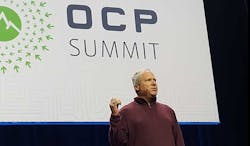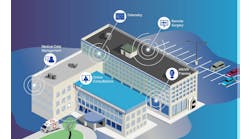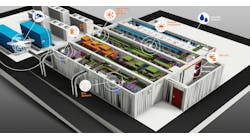SAN JOSE, Calif. – Over its first seven years, the Open Compute Project (OCP) has been hyperscale heaven, a forum for the world’s most advanced data center operators to showcase cutting-edge hardware innovation. As the open source hardware movement matures, leading players say the OCP’s next wave of growth will come from … telecom companies!
Wait, what? The phone companies?
Hyperscale operators are likely to remain the largest users of open hardware, but the telecom industry looms as a significant growth vector for adoption of Open Compute hardware as they retool their infrastructure for faster wireless connectivity.
“In 2017, many telcos created proof of concepts in their data centers (using Open Compute),” said Mark Roenigk, Chairman and President of the Open Compute Project. “We expect that those numbers will ramp significantly in the second half of 2018.”
“The telco cloud is the next wave for OCP,” said Cliff Grossner, Senior Research Director for Data Center, Cloud and SDN at IHS Markit. “We’re going to see telcos deploy at scale in 2018 and 2019 and onward. We really see the telcos becoming a driving force.”
5G May Change Telecom Infrastructure
The Open Compute Project (OCP) is a growing community of open source hardware hackers who are building on design innovations created for Facebook’s data centers. Over the past five years, a new generation of hardware vendors has leveraged open source OCP designs to win business in the hyperscale computing market.
The embrace of Open Compute hardware by telecom companies is linked to the impending arrival of 5G wireless technology, which may alter the infrastructure landscape for telecom companies, as well as the next-generation services enabled by 5G. It’s also a sign of progress for the Telecom Infra Project (TIP), a companion project to OCP focused on telecom industry.
Grossner’s projections were based on a study of OCP’s market impact, which was released Tuesday at the Open Compute Summit 2018 in San Jose. IHS found that revenue generated from OCP equipment in 2017 reached $1.2 billion from non-board member companies – meaning the data didn’t count major adopters such as Facebook, Rackspace, Microsoft, Intel and Goldman Sachs.
Why exclude the board members? The OCP said is well known that its board member have widely adopted OCP, it was unknown until now how far OCP had reached beyond these core players.
IHS Markit projects that OCP adoption among non-board member companies could surpass $6 billion by 2021. Telecom providers figure to be meaningful component of those numbers.
Up to $5 Billion in Investment
“The telcos really see OCP helping with 5G, where the telcos become very virtualized,” said Grossner. “OCP will play a very large role in that.”
5G is the next-generation wireless standard being developed by the telecom industry, which is expected to bring widespread disruption of American business, as low-latency connections enable new services. 5G will require new transmission infrastructure, including thousands of cell towers and tens of thousands of antenna – known as small cells and DAS (distributed antenna systems) – that will be deployed on utility poles and other urban infrastructure.
Telecom carriers are expected to invest up to $5 billion in 5G technology. Grossner sees an emerging opportunity for OCP hardware to support uCPE (Universal Customer Premises Equipment), an initiative by major carriers to bring cloud technologies into the telecom ecosystem, including software-defined networking (SDN) and network functions virtualization (NFV).
Last year AT&T proposed that the Open Compute Project develop a spec for uCPE.
Some Barriers Persist
The telecom industry’s engagement with the Open Compute Project dates to 2016 and the formation of the Telecom Infra Project.
“AT&T will virtualize 75 percent of its network functions by 2020, and to do that, we need to move to a model of sophisticated software running on commodity hardware,” said Andre Fuetsch, Senior Vice President of Architecture and Design at AT&T, at the announcement of the TIP’s formation. “We’re becoming a software and networking company. As a result, our central offices are going to look a lot more like data centers as we evolve our networking infrastructure.”
Aside from telecoms, other sectors shaping up as OCP customers include financial companies and e-commerce providers, according to Grossner.
But barriers to Open Compute adoption persist, according to IHS, which said the largest challenge remains integrating OCP gear with existing equipment and data center environments. Some challenges are organizational, as not all levels of the organization have buy-in on the value of OCP usage.






